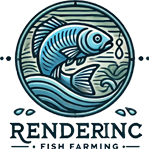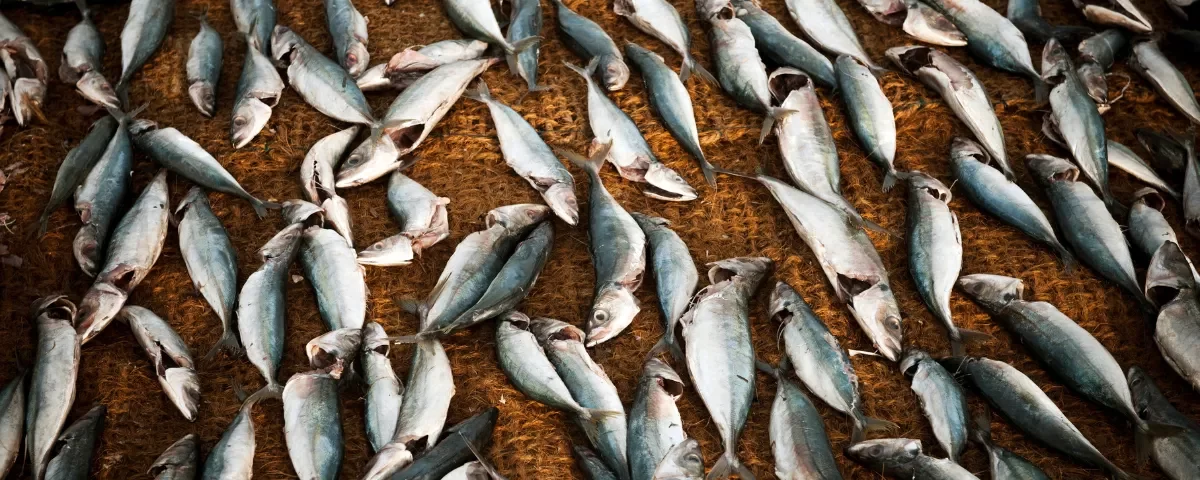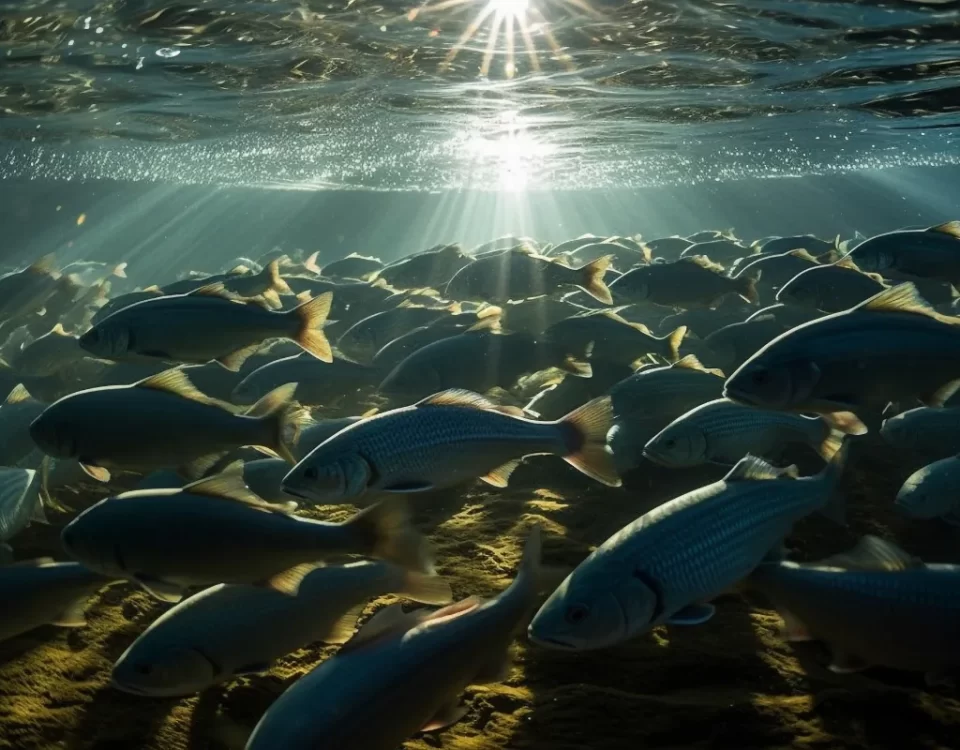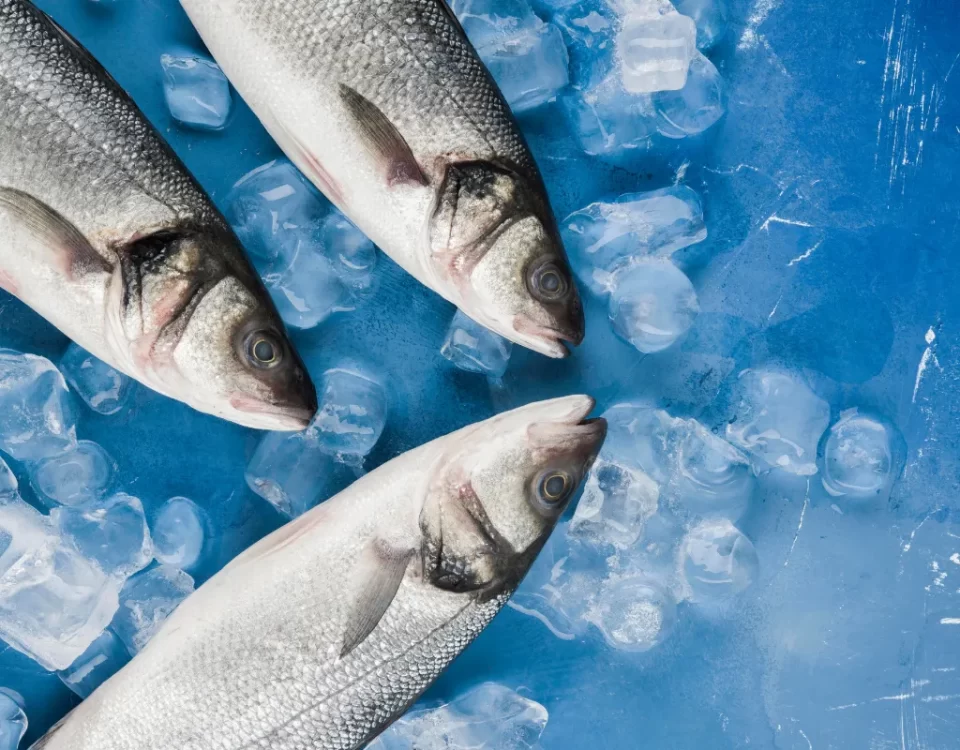Step-by-Step Guide to Building Your Own Fish Farm

Smart Sensors in Aquaculture: Monitoring Fish Health and Water Quality
agosto 22, 2024
Cutting-Edge Aquaculture Technologies for Reducing Environmental Impact
agosto 24, 2024Fish farming, also known as aquaculture, offers a multitude of benefits that have made it a popular choice among individuals looking to venture into sustainable agriculture. Eating fish is not only a healthy choice but also an essential source of protein for many people around the world. Fish farming provides a controlled environment where fish can be raised under optimal conditions, ensuring a steady supply of fresh and nutritious seafood.
The idea of building your own fish farm may seem daunting at first, but with the right knowledge and guidance, it can be a rewarding endeavor. Whether you are looking to start a small-scale operation in your backyard or establish a commercial fish farm, proper planning and execution are key to success. Proper planning involves considering factors such as location, water supply, species selection, and market demand.
Before diving into the world of fish farming, it is crucial to understand the importance of sustainable practices and ethical considerations. Responsible aquaculture not only benefits the environment but also ensures the long-term viability of your fish farm. By maintaining good water quality, proper feeding practices, and disease prevention measures, you can create a thriving ecosystem that supports healthy fish growth and productivity. Always remember that meticulous planning and attention to detail are essential for the success of your fish farming venture.
Research and Planning
Before delving into the rewarding venture of building your own fish farm, it is vital to conduct thorough research to lay a solid foundation for success. Understanding the nuances of fish farming, the specific requirements of different fish species, and the market demand for the type of fish you intend to produce are crucial aspects to consider during this initial phase. Research will guide your decisions regarding the size of your farm, the type of infrastructure needed, and the sustainability practices you should adopt.
When selecting a location for your fish farm, various factors must be taken into account to ensure the well-being of your aquatic creatures and the efficiency of your operations. Water quality, accessibility to a water source, proximity to markets, and the existing regulatory environment are all key elements that can make or break your venture. Evaluating the topography of the land and its suitability for fish farming can help you determine whether ponds, tanks, or cages would be the most feasible option.
Types of Fish Farms
Ponds
Ponds are traditional and cost-effective options for fish farming, particularly suitable for warm-water fish species. They provide ample space for fish to thrive in a natural environment, but they may require more extensive maintenance to control water quality and prevent predators.
Tanks
Tanks are highly versatile and ideal for indoor or limited-space setups, allowing for precise control over water quality and feeding. However, the initial investment for tank systems can be higher, and energy costs may increase when compared to ponds.
Cages
Cage farming involves raising fish in floating enclosures within larger water bodies such as lakes or oceans. This method offers natural water circulation and space utilization but requires careful monitoring to prevent pollution and escape of fish.
Each type of fish farm comes with its own set of advantages and challenges, so choosing the right one that aligns with your goals and resources is crucial during the planning stage of your fish farming venture.
Legal and Regulatory Considerations
As you embark on the journey of building your own fish farm, it is imperative to pay heed to the legal and regulatory considerations that govern this industry. Before diving into the aquaculture realm, familiarize yourself with the essential permits and licenses required for operating a fish farm. Depending on your location, these may include permits for water use, aquaculture operations, and environmental impact assessments. It is crucial to ensure that you have all the necessary paperwork in place before commencing your fish farming endeavors.
Local authorities and fishery departments typically set forth regulations and guidelines to uphold the sustainability and environmental integrity of fish farming practices. These regulations may encompass parameters on stocking density, water quality management, waste disposal, and disease prevention measures. By understanding and abiding by these regulations, you not only safeguard the health of your fish stocks but also contribute to the preservation of aquatic ecosystems. Engage with regulatory bodies to stay informed about any updates or changes in the legal landscape that may affect your fish farming operation.
To ensure compliance with environmental laws and regulations, it is advisable to implement eco-friendly practices within your fish farm. Consider incorporating sustainable aquaculture methods such as recirculating aquaculture systems, integrated multitrophic aquaculture, or polyculture techniques. These approaches promote resource efficiency, minimize environmental impacts, and enhance the overall sustainability of your fish farming operation. Additionally, regularly monitor key indicators such as water quality, biodiversity levels, and energy consumption to track your farm’s environmental performance.
In the realm of fish farming, transparency and accountability are key components of regulatory compliance. Maintain detailed records of your farm’s activities, including stocking densities, feed formulations, water quality assessments, and disease management protocols. By keeping meticulous records, you not only demonstrate your commitment to regulatory compliance but also gain valuable insights into the efficacy of your farm management practices. Embrace a proactive approach to environmental stewardship, prioritize sustainable practices, and collaborate with industry stakeholders to foster a culture of responsible fish farming.
Designing Your Fish Farm
Designing the layout of your fish farm is a critical step in setting up a successful operation. It’s essential to plan out the placement of ponds, tanks, and infrastructure to ensure optimal efficiency and productivity. Consider factors such as topography, sunlight exposure, and proximity to water sources when deciding on the layout. A well-thought-out design will facilitate the management of your fish farm and contribute to the health and growth of your fish.
When it comes to the equipment and infrastructure needed for your fish farm, there are several key components to consider. Pond liners are essential for maintaining water levels and preventing leaks. Aeration systems help improve oxygen levels in the water, crucial for the health of your fish. Filtration systems remove waste and debris from the water, promoting clean and healthy conditions for your fish to thrive. Additionally, feeding and harvesting equipment are necessary for feeding your fish and efficiently collecting mature fish for sale.
Improving water quality and circulation in your fish farm is paramount to the success of your operation. Proper water management practices, such as regular monitoring of water quality parameters like pH and dissolved oxygen, are essential. Utilizing biofilters can help reduce ammonia and nitrate levels, ensuring a healthy aquatic environment for your fish. Installing water pumps and circulation systems can improve water movement and oxygenation, preventing stagnation and promoting growth. By focusing on water quality and circulation, you can create an optimal environment for your fish to thrive and achieve maximum productivity.
Choosing the Right Fish Species
When embarking on your fish farming journey, selecting the appropriate fish species is a crucial decision that will significantly impact the success of your venture. Different fish species have varying requirements in terms of water quality, temperature, feeding habits, and market demand. Let’s explore some popular fish species that are well-suited for aquaculture and delve into their specific characteristics to help you make an informed choice.
1. Tilapia
Tilapia is one of the most popular choices for fish farming due to its rapid growth rate, high tolerance to different environmental conditions, and mild-tasting white flesh that appeals to consumers. These omnivorous fish are relatively easy to culture and can thrive in various water temperatures, making them adaptable to different climate conditions. Tilapia is often in high demand in the market, making it a profitable option for fish farmers.
2. Catfish
Catfish is another favored species for aquaculture, known for its robust nature and quick growth. They are bottom-feeders, consuming a wide range of feed, thus reducing feeding costs. Catfish are resilient to changing water quality parameters and can be farmed in ponds or recirculating aquaculture systems. With a significant demand in various cuisines worldwide, catfish can be a profitable choice for fish farmers.
3. Trout
Trout is a cold-water fish species that thrives in clean, well-oxygenated water. These highly prized fish are known for their delicate flavor and firm texture. Trout farming requires specific temperature and water quality parameters to be met consistently. Due to their gourmet appeal, trout commands a premium price in the market, making it an attractive choice for fish farmers operating in cooler climates.
4. Carp
Carp is a hardy fish species that can adapt to a wide range of water conditions, including low oxygen levels. Carp are omnivorous and efficient feed converters, making them a cost-effective option for fish farmers. With a high demand in many regions and versatile culinary uses, carp farming can be a lucrative venture. It’s essential to consider the specific requirements of each fish species, market demand, and your local climate conditions when selecting the right fish species for your farm. By choosing wisely, you pave the way for a successful and profitable fish farming operation.
Stocking and Feeding
When it comes to building your own fish farm, one of the essential steps is stocking your ponds with high-quality fingerlings or juveniles. Sourcing reputable suppliers is crucial to ensure the success of your fish farm. Look for suppliers who provide healthy, disease-free fingerlings that are well-suited to the species you intend to cultivate. It’s advisable to visit the hatchery in person to inspect the facilities and the quality of the fish before making a purchase.
Sourcing Quality Fingerlings
To source quality fingerlings, consider reaching out to local fish hatcheries or reputable suppliers within the aquaculture industry. Networking with other fish farmers or attending aquaculture conferences can also lead you to reliable sources. Always inquire about the health and genetic background of the fingerlings to ensure they are free from diseases and have the potential for optimal growth.
Feeding Your Fish
Feeding your fish is a critical aspect of fish farming that directly impacts their health and growth. It’s important to provide a well-balanced diet that meets the nutritional requirements of the fish species you are farming. Pellet feeds are commonly used in fish farming as they are formulated to provide essential nutrients. Regular feeding schedules should be maintained to ensure the fish receive adequate nutrition without overfeeding, which can lead to water pollution and health issues.
Monitoring Growth Rates
Monitoring the growth rates of your fish is essential for assessing their overall health and adjusting feeding practices accordingly. Keep track of growth parameters, such as size and weight gain, to determine if your fish are growing at the expected rate. If you notice any discrepancies or signs of slow growth, it may indicate an issue with feeding practices or water quality. Adjust the feeding regimen as needed to ensure optimal growth and development of your fish.
Importance of Adjusting Feeding Practices
Adjusting feeding practices based on growth rates and environmental factors is crucial for maintaining healthy fish populations on your farm. Overfeeding can lead to nutrient wastage and water quality problems, while underfeeding can stunt growth and compromise overall fish health. By closely monitoring growth rates and observing fish behavior, you can fine-tune your feeding practices to promote efficient growth and maximize the productivity of your fish farm.
Managing Water Quality
Maintaining optimal water quality is crucial for the health and growth of your fish in a fish farm. Water quality parameters play a significant role in the overall well-being of your aquaculture system. Key parameters to monitor include dissolved oxygen levels, pH, ammonia, nitrites, and nitrates. Ensure that these parameters are within the recommended ranges for the specific type of fish you are farming.
Testing and Monitoring
Regular water testing is essential to ensure that your fish are thriving in a healthy environment. Invest in quality water testing kits to accurately measure the various parameters. Test the water at least once a week, or more frequently during periods of high stocking density or warm weather. Keep detailed records of your test results to track any changes over time.
Maintaining Water Quality Levels
To maintain proper water quality levels, consider implementing a robust filtration system to remove waste and excess nutrients from the water. Regularly clean filters, and ensure that water circulation is adequate throughout the fish farm. Proper aeration is also crucial to ensure sufficient oxygen levels for the fish. Monitor water temperature to prevent any sudden fluctuations that can stress the fish.
Prevention of Water Quality Issues
Preventing common water quality issues and diseases is key to the success of your fish farm. Avoid overfeeding, as uneaten food can lead to ammonia spikes. Control stocking density to prevent overcrowding, which can result in poor water quality. Quarantine new fish before introducing them to the main system to prevent the spread of diseases. Implement biosecurity measures to minimize the risk of pathogens entering your fish farm.
Disease Management Strategies
In the event of a water quality issue or disease outbreak, swift action is necessary to protect your fish. Consult with a veterinarian specializing in aquaculture to diagnose the problem and recommend appropriate treatment. Consider using natural treatments such as probiotics to promote a healthy microbial balance in the water. Regularly monitor your fish for any signs of illness and address any issues promptly to prevent further spread.
Harvesting and Marketing
Harvesting fish from your farm is a crucial stage that requires precision and careful planning. The optimal timing for harvesting can vary depending on the species you are raising. For example, tilapia are typically ready for harvest between 6 to 9 months, while trout might be ready after about 18 months. It’s essential to monitor the growth and health of your fish regularly to determine the right time for harvesting. Overlooking this step can lead to subpar quality and lower yields.
Harvesting Techniques
When it comes to the actual harvesting process, several techniques can be employed. One common method is seining, where a large net is used to corral the fish into a smaller area for easier collection. Another method is draining the pond, which can be effective for species like catfish. Whichever technique you choose, ensure that it is done swiftly and with minimal stress to the fish. Stress can affect the quality of the meat, so a gentle approach is key.
Handling and Processing
Once the fish are harvested, it’s crucial to handle and process them properly to maintain freshness and quality. Ensure that the fish are chilled immediately to prevent spoilage and bacterial growth. Proper cleaning and filleting techniques should be employed to prepare the fish for consumption. Consider investing in quality processing equipment to streamline this step and ensure consistency in the final product.
Marketing Strategies
To sell your fish products successfully, you need to have a solid marketing strategy in place. Local markets, restaurants, and direct sales to consumers are all viable options for selling your fish. Consider creating a brand identity for your products to differentiate them from others in the market. Utilize social media and online platforms to reach a broader audience and showcase your products. Networking with local businesses and attending farmer’s markets can also help increase your visibility and attract potential customers. By implementing a comprehensive marketing plan, you can effectively promote your fish farm products and establish a loyal customer base.
After delving into the intricacies of building your own fish farm, it is clear that this endeavor holds immense potential for those willing to take the plunge into sustainable and profitable fish farming. Let’s recap the key steps in this exciting journey:
Site Selection and Planning
Selecting the right location for your fish farm is crucial. Factors such as water quality, accessibility, and space must be carefully considered. Develop a comprehensive business plan that outlines your goals, budget, and timeline.
Constructing the Infrastructure
Building the necessary infrastructure, such as ponds, tanks, and filtration systems, requires attention to detail and quality materials. Ensure that your facilities are well-designed to promote efficient fish production.
Stocking and Monitoring
Acquiring healthy fingerlings from reputable sources is essential to the success of your fish farm. Implement a monitoring system to track water quality, feeding schedules, and growth rates to optimize production.
Marketing and Sales
Establish a strong brand presence for your fish farm through effective marketing strategies. Explore various channels to reach potential customers and highlight the quality and sustainability of your products.
In conclusion, embarking on the journey of building your own fish farm is a rewarding and fulfilling venture. By following these steps and embracing the challenges that come with fish farming, you can reap the benefits of a sustainable and profitable business. With dedication and perseverance, you can make a positive impact on the environment while creating a successful enterprise in the realm of aquaculture. Start your fish farming journey today with confidence and watch as your efforts yield bountiful rewards.

Michael Rivers is an experienced aquaculture enthusiast with over a decade of hands-on knowledge in fish farming and sustainable aquatic systems. Passionate about promoting eco-friendly practices, he shares his expertise on fish breeding, water management, and the latest advancements in aquaculture technology. Through his blog, Michael aims to help both beginners and seasoned fish farmers achieve success in their ventures while contributing to the growth of sustainable food production.




